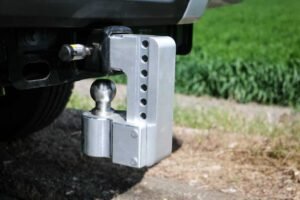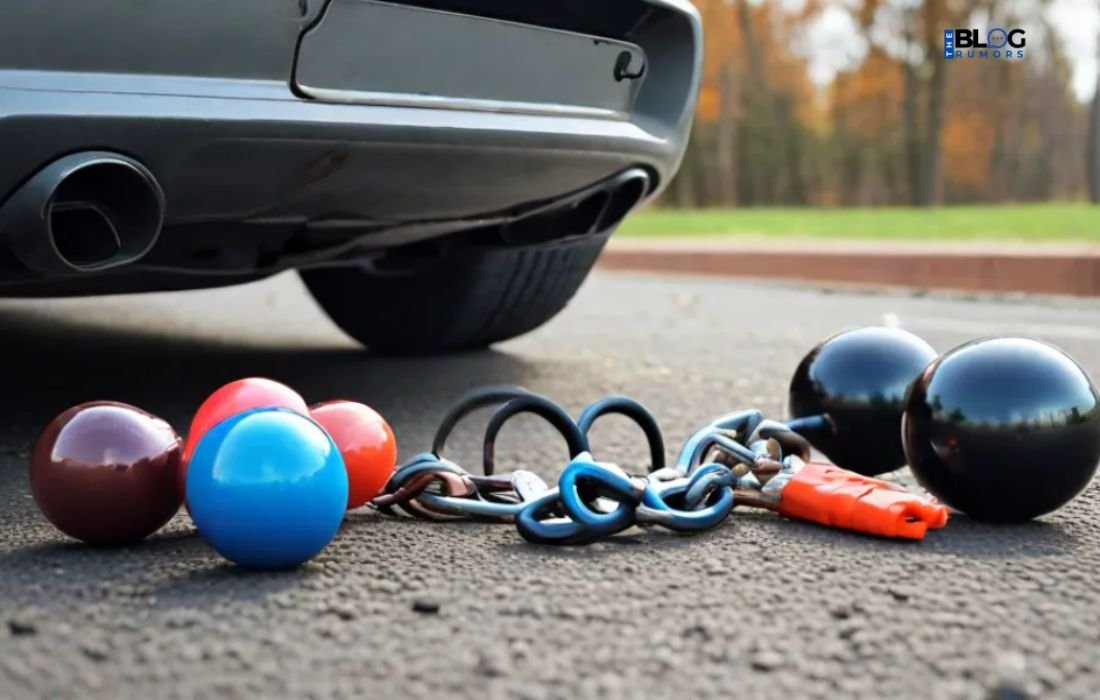Automotive towing equipment is essential for moving trailers, boats, and other heavy loads. The right setup makes a significant difference in safety and towing performance. Two key components of towing equipment are hitches and hitch balls. Both work together to connect a vehicle to its load securely. This article explores the various types, uses, and factors to consider when choosing towing hitches and hitch balls. Understanding Automotive Towing Equipment Hitches Balls helps you choose the best towing setup for your needs.
What is a Towing Hitch?
To move boats, trailers, and other heavy things, you need tow tools for your car. The right setting makes a big difference in how safe you are and how well you can tow. Hitches and hitch balls are two important parts of pulling gear. Both work together to fully connect a car to its load. Allinurl talks about the different kinds of tow hitches and hitch balls, how they can be used, and things you should think about when picking them. You can choose the best tow setup for your needs if you understand allinurl: Automotive Towing Equipment Hitches Balls.
What is a Towing Hitch?
A tow hitch is a piece of hardware that connects to the frame of a car. It’s where the car and the load are connected to each other. There are various types and sizes of hitches, each made for a specific amount of pulling power. Picking the right hitch is very important for safe driving. There are also different connection systems built into hitches so that they can handle different types of loads and tow needs.
Types of Towing Hitches
There are different kinds of tow hitches, and each has its own uses and benefits. Most people have these types:
Receiver Hitches
The most popular kind of hitch is a receiver hitch. They have a hole that is square and about 1.25 to 2.5 inches wide. Hitch balls, bike racks, and luggage carriers are just some of the towing accessories that can be attached to the receiver hitch. Hitch classes are a way to group receiver hitches by how much weight they can hold. The weight limit goes up with each class, from Class I to Class V.
Bumper-Mounted Hitches
trunk-mounted hitches connect straight to the trunk of a car. Because they can only hold so much weight, these hitches are usually used to pull small loads. A lot of people use them to pull small trailers or cargo wagons. Since they link to the bumper, they don’t need to be installed in a special way or have any changes made to the frame of the car.
Gooseneck Hitches
Gooseneck hitches are made to pull big things. They are often used with RVs or trailers that are big. This kind of hitch is put on close to the back axle in the bed of a pickup truck. Gooseneck hitches are great for keeping big loads stable and supported. But they need to be installed by a professional, and they don’t work with all cars.
Fifth-Wheel Hitches
Gooseneck hitches and fifth-wheel hitches are the same. They are very stable and can also be put in the bed of a pickup truck. A fifth-wheel hitch is often used to pull big trailers like RVs and horse trailers. Instead of a ball, these hitches use a kingpin and jaw connection for a unique way to join.
Hitch Classes and Weight Ratings
To choose the right pulling setup, you need to know about the different types of hitches. Here are the most popular hitch classes and how much weight they can hold:
Class I Hitches
Class I hitches can hold up to 2,000 pounds of weight and are the smallest. They can hold small loads, like bike racks or small trailers. Sometimes you can find class I hitches on small cars.
Class II Hitches
It is possible for a Class II hitch to hold up to 3,500 pounds. Tow things that are a little heavy, like small boats or bigger trailers, with these. A lot of SUVs and mid-sized cars can fit Class II hitches.
Class III Hitches
Class III hitches can hold up to 8,000 pounds, which means they can be used for medium-duty pulling. They’re often found on SUVs and trucks. Class III hitches can pull campers, boats, and trailers that are about the size of a car.
Class IV Hitches
Class IV hitches are made to handle big loads and can hold up to 10,000 pounds. They work great for RVs, boats, and campers that are bigger. A Class IV hitch can be attached to most full-sized cars.
Class V Hitches
Class V hitches can pull up to 20,000 pounds, making them the largest. These hitches are made to hold the heaviest loads and are usually found on commercial or heavy-duty cars.
Hitch Ball Basics
The hitch ball, also called the trailer ball, is an important part of driving. It links the trailer to the hitch and lets the trailer turn and move. Getting the right hitch ball makes sure that pulling goes smoothly and safely.

Also Read More: Gowagerhub
Types of Hitch Balls
There are different sizes of hitch balls for different types of pulling. Most people have these types:
Standard Hitch Ball
Most of the time, people use the normal hitch ball. It’s simple and round, which makes it easy to move the trailer. Standard hitch balls come in different sizes, from 1-7/8 inches to 2-5/16 inches.
Gooseneck Hitch Ball
For gooseneck hitches, there is a gooseneck hitch ball. In the bed of a pickup truck, it is fixed on a hitch ball that is much bigger than most. Gooseneck balls are usually 2-5/16 inches in diameter and keep big loads stable.
Pintle Hitch Ball
The pintle hitch ball is shaped like a hook and is commonly used for pulling in the military or in industry. When there is rough ground and big loads, pintle hitches work great. They make the link between the car and the trailer very safe.
Selecting the Right Hitch Ball
When choosing a hitch ball, think about the following:
- Ball width: The width of the ball should be the same as the coupler size on the trailer. Most of the time, widths are 1-7/8 inches, 2 inches, or 2-5/16 inches.
When you put the shank into the hitch mount hole, it should fit snugly. Check to see if the hitch mount can fit the shank size. - Weight Rating: Each hitch ball can hold a certain amount of weight. Make sure that the hitch ball’s weight number is the same as or greater than the trailer’s weight.
- Mount: Pick a ball mount that can hold the weight that you need to. To meet your pulling needs, ball mounts come in a range of lengths and heights.
Importance of Towing Capacity
When setting up a tow system, towing ability is very important. Going over the towing capacity can lead to major accidents and damage to both the trailer and the vehicle. Always check how much your car and hitch system can pull. As well as the hook and hitch ball, make sure that all of the parts can hold the weight of the load.
How to Measure Hitch Ball Height
For even pulling, the height of the hitch ball is important. How to figure it out:
- Place the car and trailer on a flat surface.
- Find out how high the hitch receiver is above the ground.
- Find out how tall it is from the ground to the coupler’s bottom.
- For even pulling, the hitch ball height should be close to the coupler height.
Hitch Accessories
Tow devices make it easier and safer to pull something behind you. Here are a few popular extras:
Safety Chains
For securing the trailer, safety bands are a must. They offer an extra connection in case the hitch breaks. Put safety chains under the coupler in a crisscross design.
Hitch Locks
Hitch locks keep the hitch and trailer from being stolen. They come in different styles, like coupler locks and receiver locks.
Sway Control Bars
Sway control bars help keep the trailer stable by limiting its ability to move from side to side. They are useful for pulling when it’s windy or when the ground is rough.
Weight Distribution Hitches
Weight distribution hitches make pulling more stable. They spread the weight of the trailer evenly across the axles of the car. This set-up works great for long trailers or things that are heavy.
Maintenance Tips for Hitches and Balls
Towing equipment lasts longer if it is well taken care of. Do these things:
- Check Often: Look for signs of damage or wear on the hitch and ball. See if there is rust, cracks, or bending.
- Grease up the moving parts: Lubricant can be used to lower friction between moving parts. This keeps things from getting worn out.
- Secure All links: Make sure all of your links are safe. The trailer can come off if the links are loose.
- Keep it clean: After each use, clean the hitch and ball, especially if they were in saltwater or dirt.
Conclusion
All in all, Automotive pulling Equipment Hitches Balls are an important part of safe pulling. A safe pulling experience depends on picking the right gear based on weight, hitch class, and ball size. Every type of hitch, from receiver hitches to gooseneck hitches, is used for a different purpose. Keeping things in good shape and using extras can make things even safer and easier to use. Knowing about tow tools lets you make smart decisions that make the tow experience smoother and safer.
FAQs
What is the difference between a gooseneck and a fifth-wheel hitch?
For a gooseneck hitch, the truck bed has a hitch ball. For a fifth-wheel hitch, the axle and jaw are used. Both are used to pull big things.
How do I know which hitch class I need?
The type of hitch is based on how much the trailer weighs. To find the right hitch class, check how much your car can pull.
Can I tow a trailer with a bumper-mounted hitch?
Yes, but only for small amounts of weight. Hitch bumpers can only hold a certain amount of weight.
What size hitch ball should I use?
Pick a hitch ball that fits the coupler on your trailer. Most people choose between 1-7/8 inches, 2 inches, and 2-5/16 inches.
Do I need a weight distribution hitch?
For big loads, a weight distribution hitch is helpful because it spreads the weight of the trailer out evenly. This makes things more stable.
How do I maintain my towing equipment?
Regularly check and clean, lubricate moving parts, and make sure links are safe.
What is the role of safety chains?
When the hitch fails, safety chains act as a backup way to connect the trailer to the car.
How does hitch height affect towing?
The trailer stays level when the hitch is at the right height, which makes pulling more stable.
Also Read More: FintechZoom .com





